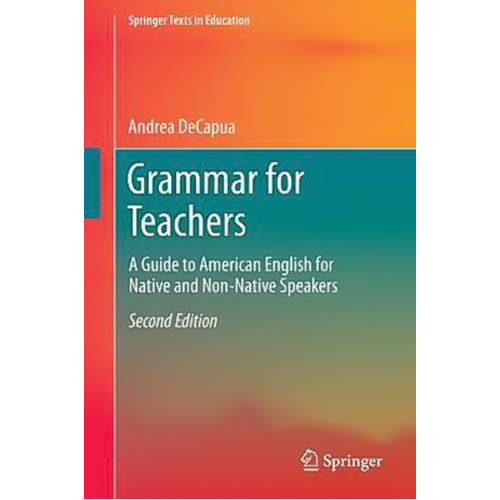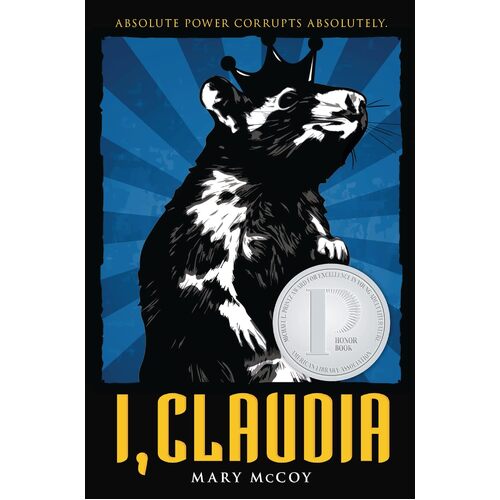Grammar for Teachers Paperback Book
A Guide to American English for Native and Non-Native Sp
Grammar for Teachers: A Guide to American English for Native and Non-Native Speakers: 2016 (Springer Texts in Education)
Author: Andrea DecapuaPublisher: Springer International Publishing AGCategory: Grammar & Vocabulary, Popular Culture, Philosophy & Theory Of Education, Philosophy & Theory Of Education, Educational Psychology, Educational Psychology, Educational Strategies & Policy, Educational Strategies & Policy, Teaching Skills & Techniques, Teaching Skills & TechniquesBook Format: PaperbackUpdated and revised with more examples and expanded discussions, this second edition continues the aim of providing teachers with a solid understanding of the use and function of grammatical structures in American English. The book avoids jargon and presents essential grammatical structures clearly and concisely. Dr. DeCapua approaches grammar from a descriptive rather than a prescriptive standpoint, discussing differences between formal and informal language, and spoken and written English. The text draws examples from a wide variety of authentic materials to illustrate grammatical concepts. The many activities throughout the book engage users in exploring the different elements of grammar and in considering how these elements work together to form meaning. Users are encouraged to tap into their own, often subconscious, knowledge of grammar to consciously apply their knowledge to their own varied teaching settings. The text also emphasizes the importance of understanding grammar from the perspective of English language learners, an approach that allows teachers to better appreciate the difficulties these learners face. Specific areas of difficulties for learners of English are highlighted throughout.
Chapter 1 What Is Grammar?.- 1.1 Section 1: Grammarians and Grammar.- 1.2 Section 2: Language and Change.- 1.3 Section 3: Linguists and Grammar.- Chapter 2 Morphology: Words and Their Parts.- 2.1 Section 1: Word Classes.- 2.2 Section 2: Morphology.- Chapter 3 The Noun Phrase.- 3.1 Section 1: Identifying Nouns.- 3.2 Section 2: Count, Non-Count, and Crossover Nouns.- 3.3 Section 3: Structure Words That Signal Nouns.- 3.4 Section 4: Pronouns.- Chapter 4 Adjectives and Adverbs.- 4.1 Section 1: Adjectives.- 4.2 Section 2: Adverbs.- Chapter 5 Overview of Verbs and Verb Phrases: The Heart of the Sentence.- 5.2 Section 2: Main Verbs Versus Auxiliary Verbs.- 5.3 Section 3: Transitive and Intransitive Verbs.- 5.4 Section 4: Verbs Followed by Gerunds and Infinitives.- 5.5 Section 5: Phrasal Verbs.- Chapter 6 Time, Tense, and Aspect of Verbs.- 6.1 Section 1: Verbs and Inflections - 6.2 Section 2: Present.- 6.3 Section 3: Past.- 6.4 Section 4: Future.- 6.5 Section 5: The Perfect.- Chapter 7 Modal Auxiliary Verbs and Related Structures.- 7.1 Section 1: Meanings and Use.- 7. 2 Section 2: Would and the Conditional.- Chapter 8 Basic Sentence Patterns and Major Variations.- 8.1 Section 1: Types of Sentence Constituents.- 8.2 Section 2: Questions.- 8.3 Section 3: The Passive.- 8.4 Section 4: Substitution.- Chapter 9 Compound Sentences and Introduction to Complex Sentences: Adverbial Clauses.- 9.1 Section 1: Compound Sentences.- 9.2 Section 2: Complex Sentences.- 9.3 Section 3: Reduced Adverbial Clauses.- Chapter 10 Complex Sentences Continued: Relative Clauses.- 10.1 Section 1: Relative Clauses and Relative Pronouns.- 10.2 Section 2: Relative Adverbs.- 10.3 Section 3: Reduced Relative Clauses.- Chapter 11 Complex Sentences Continued: Noun Clauses.- 11.1 Section 1: Noun Clauses.- 11.2 Section 2: Reported Speech.- Chapter 12 Verbal Constructions.- 12.1 Section 1: Gerunds and Gerund Phrases.- 12.2 Section 2: Participles and Participial Phrases.- 12.3 Section 3: Infinitives and Infinitive Phrases.- Glossary.- Appendices.- Appendix A: Some Patterns of Common Irregular Verbs.- Appendix B: The Eight Functions of The Inflectional Morphemes.- Appendix C: Essential Spelling Rules: Inflections.- Appendix D: The Minor Categories: The Structure Words.- Appendix E: Gerunds After Verbs.- Appendix F: Wh-question Words.- Appendix G: Common Adverbial Subordinators.- Appendix H: Summary of Major Learner Difficulties
Table Of Contents
Chapter 1 What Is Grammar?.- 1.1 Section 1: Grammarians and Grammar.- 1.2 Section 2: Language and Change.- 1.3 Section 3: Linguists and Grammar.- Chapter 2 Morphology: Words and Their Parts.- 2.1 Section 1: Word Classes.- 2.2 Section 2: Morphology.- Chapter 3 The Noun Phrase.- 3.1 Section 1: Identifying Nouns.- 3.2 Section 2: Count, Non-Count, and Crossover Nouns.- 3.3 Section 3: Structure Words That Signal Nouns.- 3.4 Section 4: Pronouns.- Chapter 4 Adjectives and Adverbs.- 4.1 Section 1: Adjectives.- 4.2 Section 2: Adverbs.- Chapter 5 Overview of Verbs and Verb Phrases: The Heart of the Sentence.- 5.2 Section 2: Main Verbs Versus Auxiliary Verbs.- 5.3 Section 3: Transitive and Intransitive Verbs.- 5.4 Section 4: Verbs Followed by Gerunds and Infinitives.- 5.5 Section 5: Phrasal Verbs.- Chapter 6 Time, Tense, and Aspect of Verbs.- 6.1 Section 1: Verbs and Inflections - 6.2 Section 2: Present.- 6.3 Section 3: Past.- 6.4 Section 4: Future.- 6.5 Section 5: The Perfect.- Chapter 7 Modal Auxiliary Verbs and Related Structures.- 7.1 Section 1: Meanings and Use.- 7. 2 Section 2: Would and the Conditional.- Chapter 8 Basic Sentence Patterns and Major Variations.- 8.1 Section 1: Types of Sentence Constituents.- 8.2 Section 2: Questions.- 8.3 Section 3: The Passive.- 8.4 Section 4: Substitution.- Chapter 9 Compound Sentences and Introduction to Complex Sentences: Adverbial Clauses.- 9.1 Section 1: Compound Sentences.- 9.2 Section 2: Complex Sentences.- 9.3 Section 3: Reduced Adverbial Clauses.- Chapter 10 Complex Sentences Continued: Relative Clauses.- 10.1 Section 1: Relative Clauses and Relative Pronouns.- 10.2 Section 2: Relative Adverbs.- 10.3 Section 3: Reduced Relative Clauses.- Chapter 11 Complex Sentences Continued: Noun Clauses.- 11.1 Section 1: Noun Clauses.- 11.2 Section 2: Reported Speech.- Chapter 12 Verbal Constructions.- 12.1 Section 1: Gerunds and Gerund Phrases.- 12.2 Section 2: Participles and Participial Phrases.- 12.3 Section 3: Infinitives and Infinitive Phrases.- Glossary.- Appendices.- Appendix A: Some Patterns of Common Irregular Verbs.- Appendix B: The Eight Functions of The Inflectional Morphemes.- Appendix C: Essential Spelling Rules: Inflections.- Appendix D: The Minor Categories: The Structure Words.- Appendix E: Gerunds After Verbs.- Appendix F: Wh-question Words.- Appendix G: Common Adverbial Subordinators.- Appendix H: Summary of Major Learner DifficultiesAbout Andrea DeCapua
Andrea DeCapua, Ed.D., is an educator, researcher, and educational consultant. She has over thirty years' experience in the field, having held academic appointments at various institutions, most recently at New York University and University of North Florida. Her interests include second language acquisition, culture, and pedagogy for second language learners. Dr. DeCapua specializes in teacher training for teachers of language learners and in developing intercultural awareness for classrooms in a global society. She has published numerous articles on a variety of topics ranging from grammar to sociolinguistics to addressing the needs of struggling language low-literacy learners. She is also the author of eight pedagogical texts, including the second edition of Grammar for Teachers: A Guide to American English for Native and Non-Native Speakers, published by Springer. For more information see the author's website www.andreadecapua.com or contact her at information@malpeducation.com.| SKU | BK-9783319339146 |
| Barcode # | 9783319339146 |
| Brand | Springer International Publishing AG |
| Artist / Author | Andrea Decapua |
| Shipping Weight | 0.6900kg |
| Shipping Width | 0.160m |
| Shipping Height | 0.020m |
| Shipping Length | 0.230m |
| Assembled Length | 23.400m |
| Assembled Height | 2.300m |
| Assembled Width | 15.600m |
| Type | Paperback |




